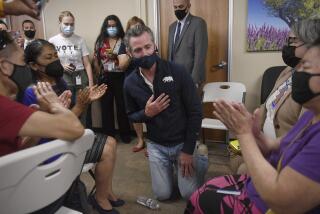Aggressive Campaign Needed to Curb Smoking, Study Finds
- Share via
STANFORD — It takes an aggressive and varied anti-smoking campaign to convince people to kick the habit, according to a four-year Stanford University study in four California cities.
Over the length of the study, “smoking dropped in all four communities, and that was both positive and a sign of the decline of cigarette smoking in our society,” said Dr. Stephen Fortmann, associate director of the Stanford Center for Disease Prevention.
Preliminary results of the study in Modesto, San Luis Obispo, Salinas and Monterey were presented recently at the American Heart Assn. meeting in San Francisco.
Salinas and Monterey were the cities used for the educational campaign. There was none in the other two cities, which were included as controls.
Fortmann’s central statistical observation was that smoking decreased 11% more among men and women aged 25 to 74 in Salinas and Monterey than in the control cities.
He said that in 1979, before the education program, smokers in Monterey and Salinas numbered about 29.9% of the population, closely paralleling the national average of 30%.
Fortmann said that after 4 1/2 years, the smoking rate in those cities had dropped to 20.3% among the people who participated in the study to its conclusion.
In the control communities of San Luis Obispo and Modesto, 28.9% of the population smoked in 1979. By the end of the study, 22.7% of surveyed participants continued to smoke.
He credited the decrease in the control cities to the national anti-smoking trend in general, outside of the special educational program.
Monterey and Salinas were exposed to a powerful anti-smoking pitch, Fortmann said. It included a “massive television and newspaper education campaign on the dangers of smoking, group therapy, contests with a free trip to Hawaii for the smoke-quitter, and educational kits for individuals.”
Fortmann said some educational approaches worked better than others, “but that all types of programs were needed for an overall effective community effort.”
More to Read
Sign up for Essential California
The most important California stories and recommendations in your inbox every morning.
You may occasionally receive promotional content from the Los Angeles Times.













